Pitfalls along the Path to Forest Recovery
In 2012, Kadoorie Farm & Botanic Garden set out to recreate natural forest across a swathe of secondary grassland on its uppermost slopes. The aspiration to do so came from recognition of the fact that Hong Kong’s original forests, now mostly disturbed, highly fragmented and confined to remote pockets, support phenomenal levels of biodiversity. Turning this aspiration into reality has meant adopting a scientific approach to understand how plant and animal species naturally interact to build complex ecosystems.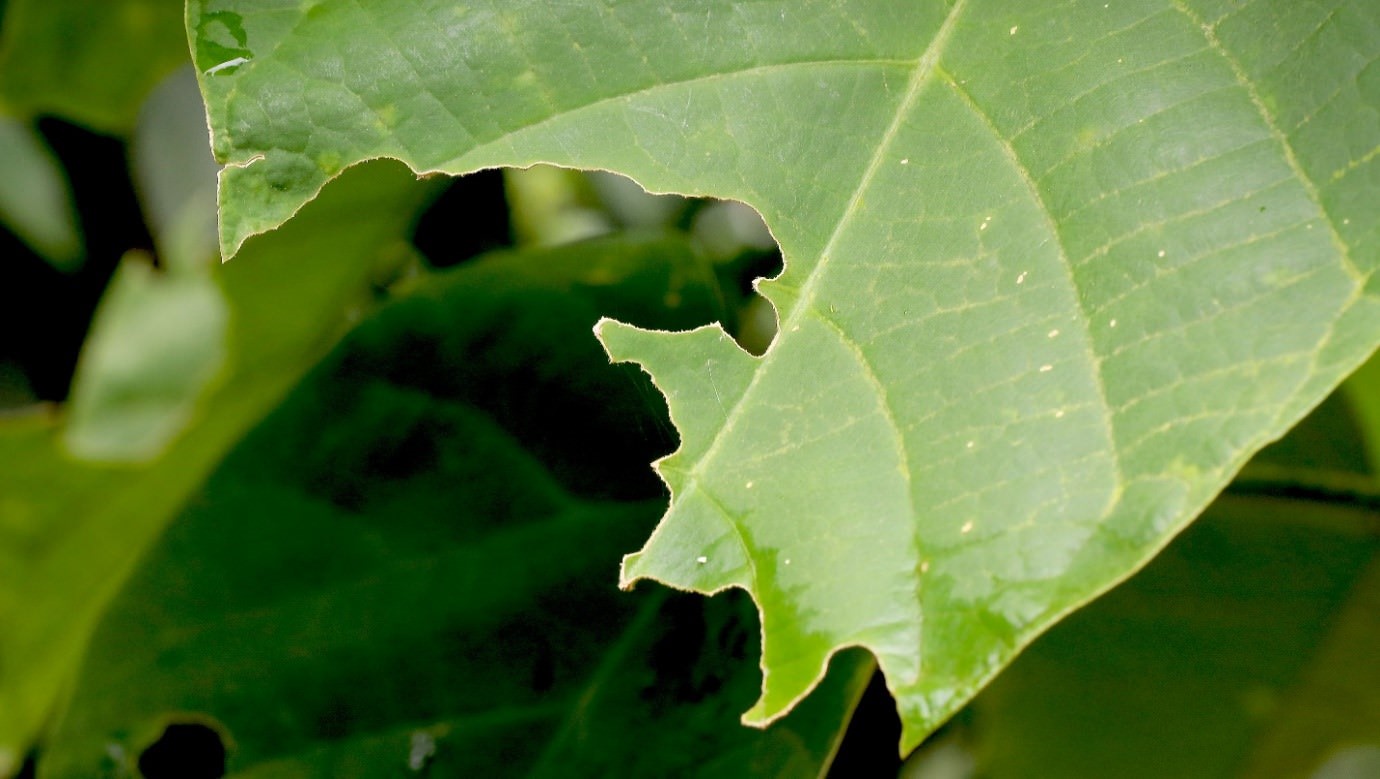
But recreating a natural forest from scratch is not as easy as it sounds. By surveying an old growth forest, we might gain an understanding of which tree species are rare and which are common, and in what sorts of microhabitats each one likes to grow. But planting those species in that ratio and in those locations may not translate into new native forest that approximates to a natural one. This is because we have to expect losses as the trees grow, and because the habitat itself will change over time. This may make it necessary to plant certain species in higher numbers or in situations in which we might not expect them to thrive.
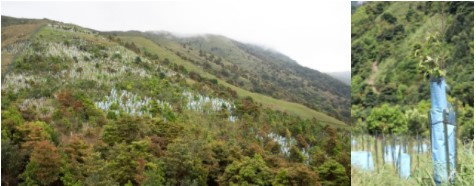
The changing environment will also have secondary effects on other organisms that live in the forest. One welcome outcome of recreating natural forest in KFBG has been increased sightings of native wildlife, including forest-dwelling birds and civet cats. However, it has also led to an increased abundance of herbivorous insects that feed on woody plants, and whilst their presence is a sure sign of the return of natural forest, their appetite is also proving to be a cause for concern.
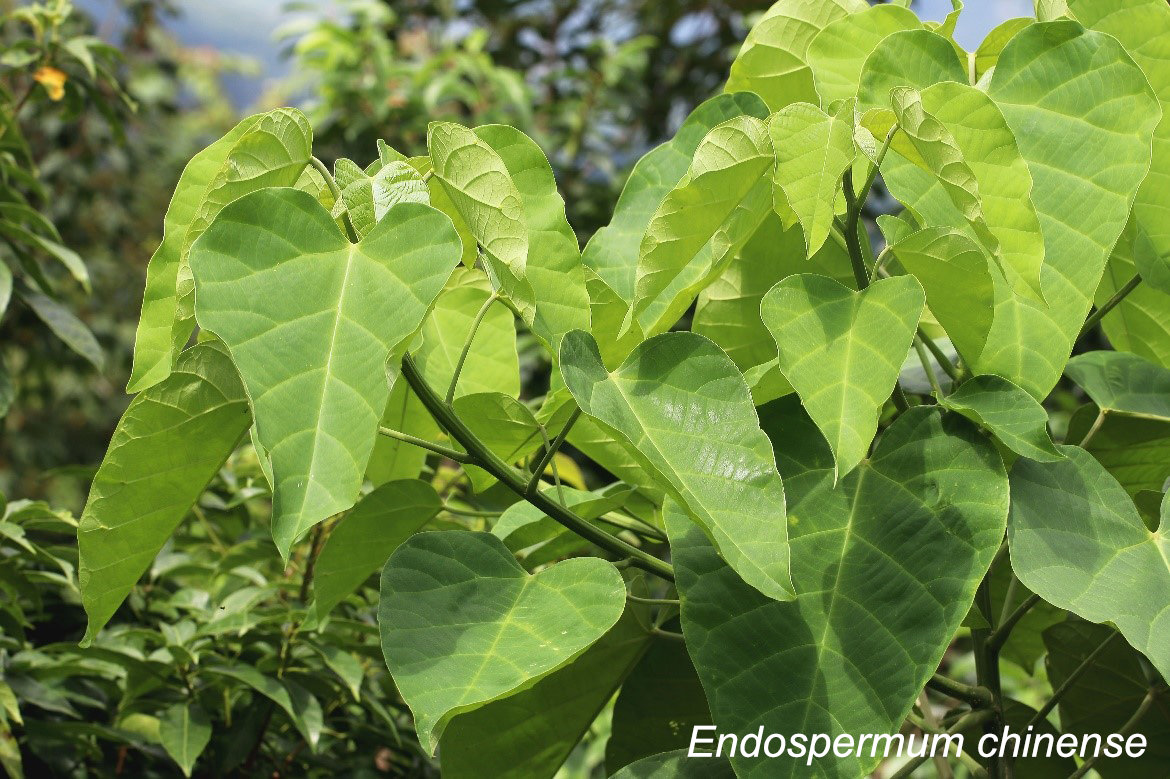
Harrowing Herbivory
Endospermum chinense, an uncommon canopy tree native to South China and the Indo-Burma region, is the host plant of the tropical swallowtail moth, Lyssa zampa. The size of this spectacular moth is a good indication of the size of caterpillar – and its appetite: just one caterpillar can demolish several young seedlings in the process of becoming an adult. Planting this tree in greater numbers to allow for potential future losses on our tree-planting site seems to be attracting bumper numbers of its enemy. Because of this, many of our Endospermum trees have suffered extensive defoliation over recent months.
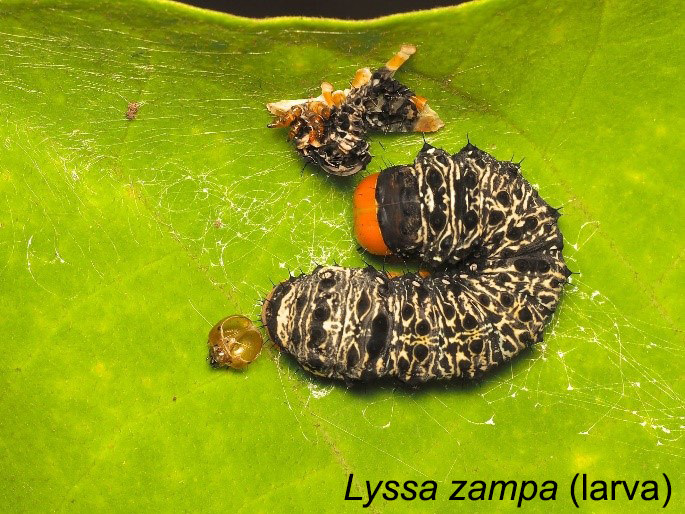
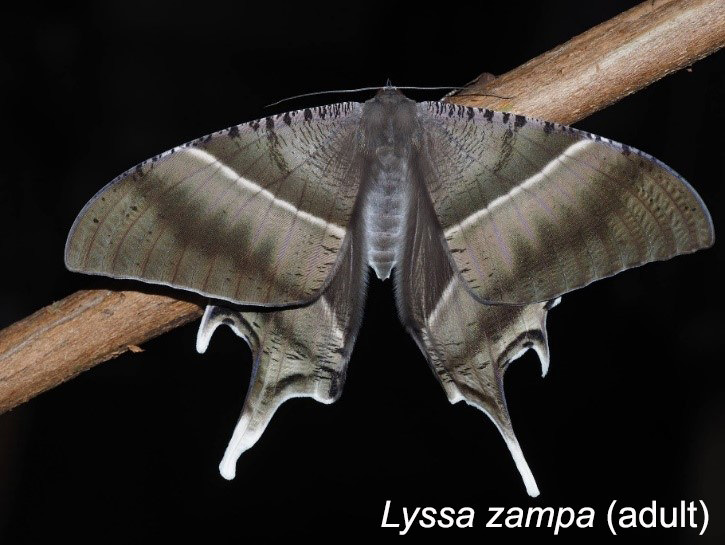
With time, we are witnessing many other cases of herbivorous insects shaping the development of our young forest, often through their rather specific dependence on a particular tree. For example, Eligma narcissus has such a devastating appetite for Ailianthus (Ailanthus fordii), a towering forest tree, that it is commonly referred to by its alias, the ailanthus defoliator. Although our Ailianthus seedlings have since recovered, they were reduced to leafless stems following an infestation of this moth last year. Even the Chinese incense tree, Aquilaria sinensis, has its own enemy: Heortia vitessoides is another moth whose caterpillars can strip a young tree bare in weeks. On top of the heavy poaching this commercially valuable tree has suffered in recent years, outbreaks of herbivory could conceivably wipe out the next generation of saplings.

An assassin bug, one of the many predators of caterpillars, found scouting out a half-eaten Endospermum chinense leaf.
Although trees produce toxins in their leaves to defend themselves from their enemies, they can still become an easy target for caterpillars if planted in unnaturally high densities. This may especially be the case in a newly planted forest in which the young, uniform canopy may facilitate the spread of hungry caterpillars from one host tree to the next and where populations of natural control agents, including wasps, parasitic fungi and predatory birds, may not yet have recovered. Just how feedback among predator, herbivore and plant populations affects overall species diversity in a healthy forest is certainly food for thought.
Though flourishing, our forest is still at an early stage of recovery, and this means there are, for now, comparatively few functioning ecological interactions. A fully functioning natural forest, on the other hand, will embody many inter-connected interactions, making the ecosystem self-sustaining as a whole. Without the support of such a balanced web, the seedlings planted on our hillside appear to be facing an increased risk of attack.
Growing Resilience
Such intricate predatory relationships are just one of the many aspects to consider when recreating natural forest. Many other challenges also present themselves, reflecting the myriad intertwined symbioses in nature. Accordingly, restoring balance to the ecosystem at KFBG can sometimes feel like an uphill struggle. But we strive to nurture a resilient forest that will be able to regulate itself in the face of any potential threat. Clearing the path to forest recovery requires deep reflection on the many surprising ways in which species influence one another’s regeneration.

